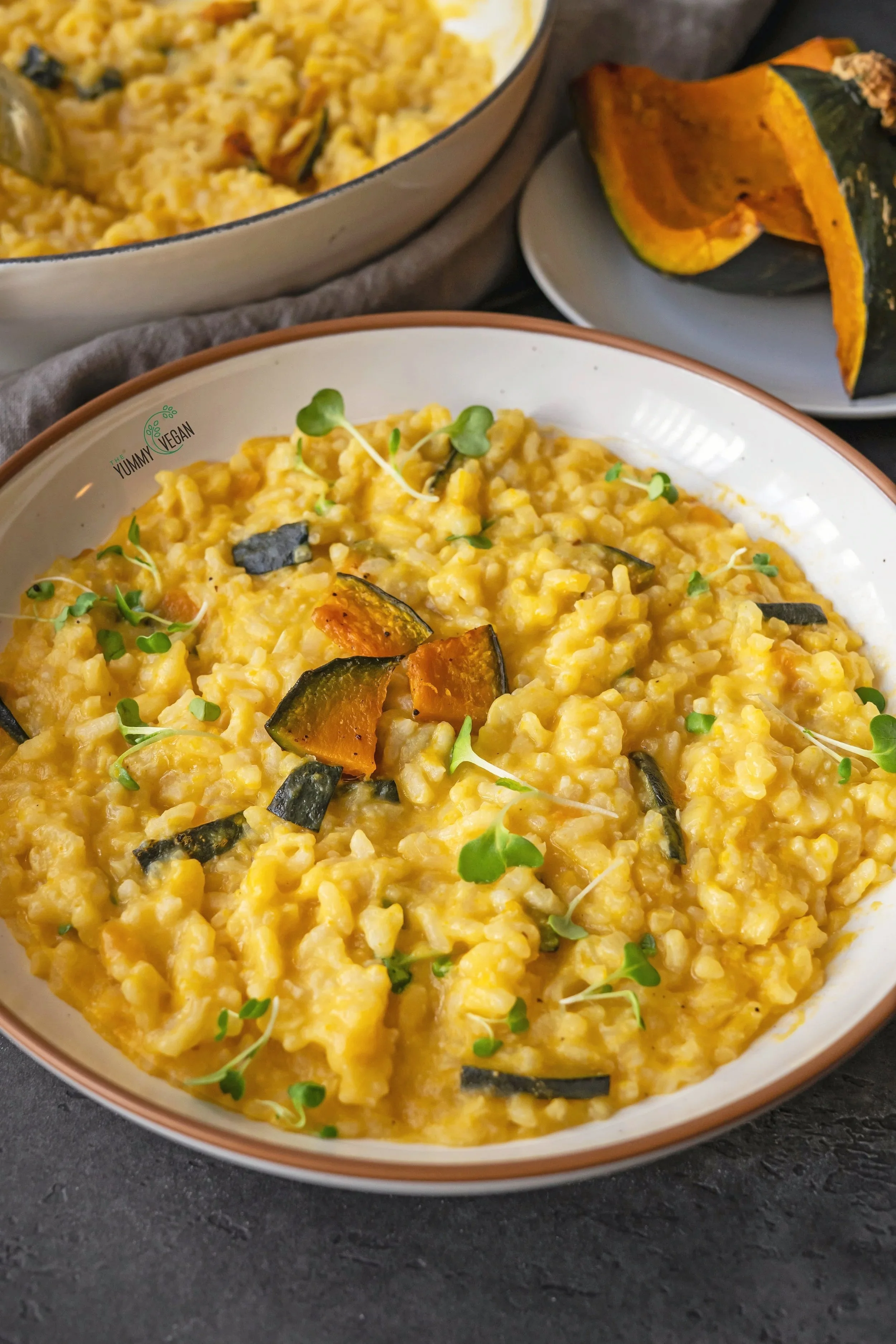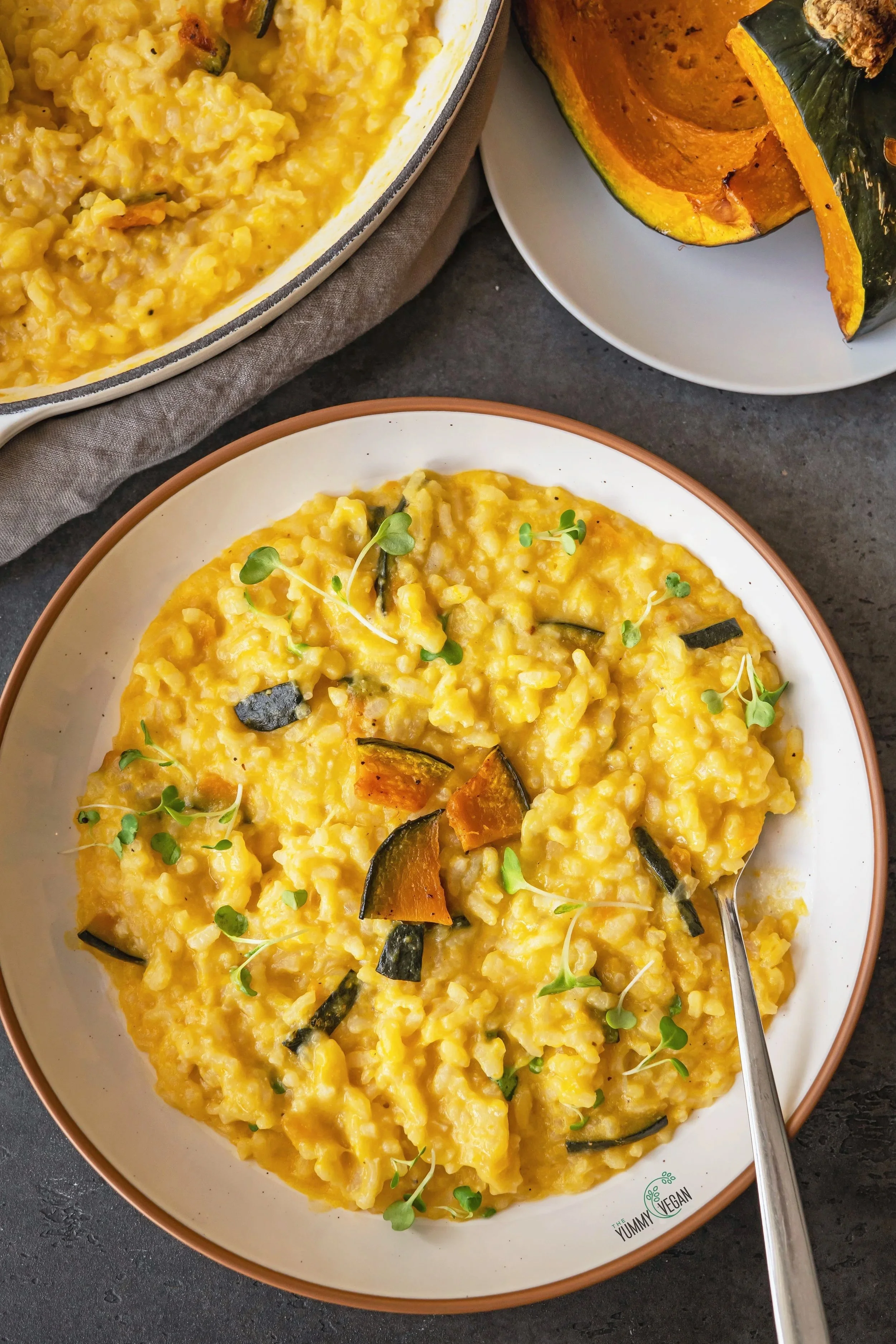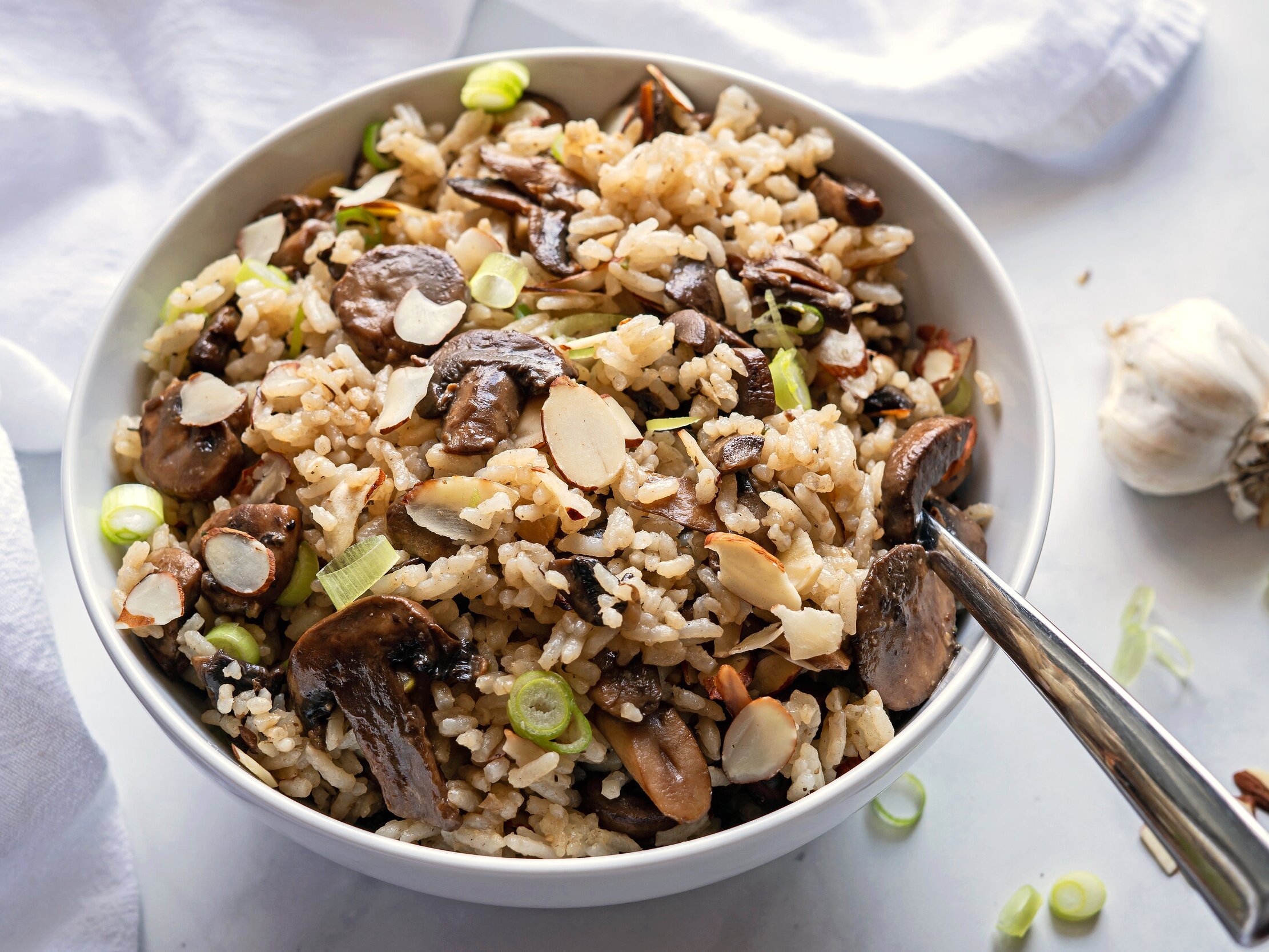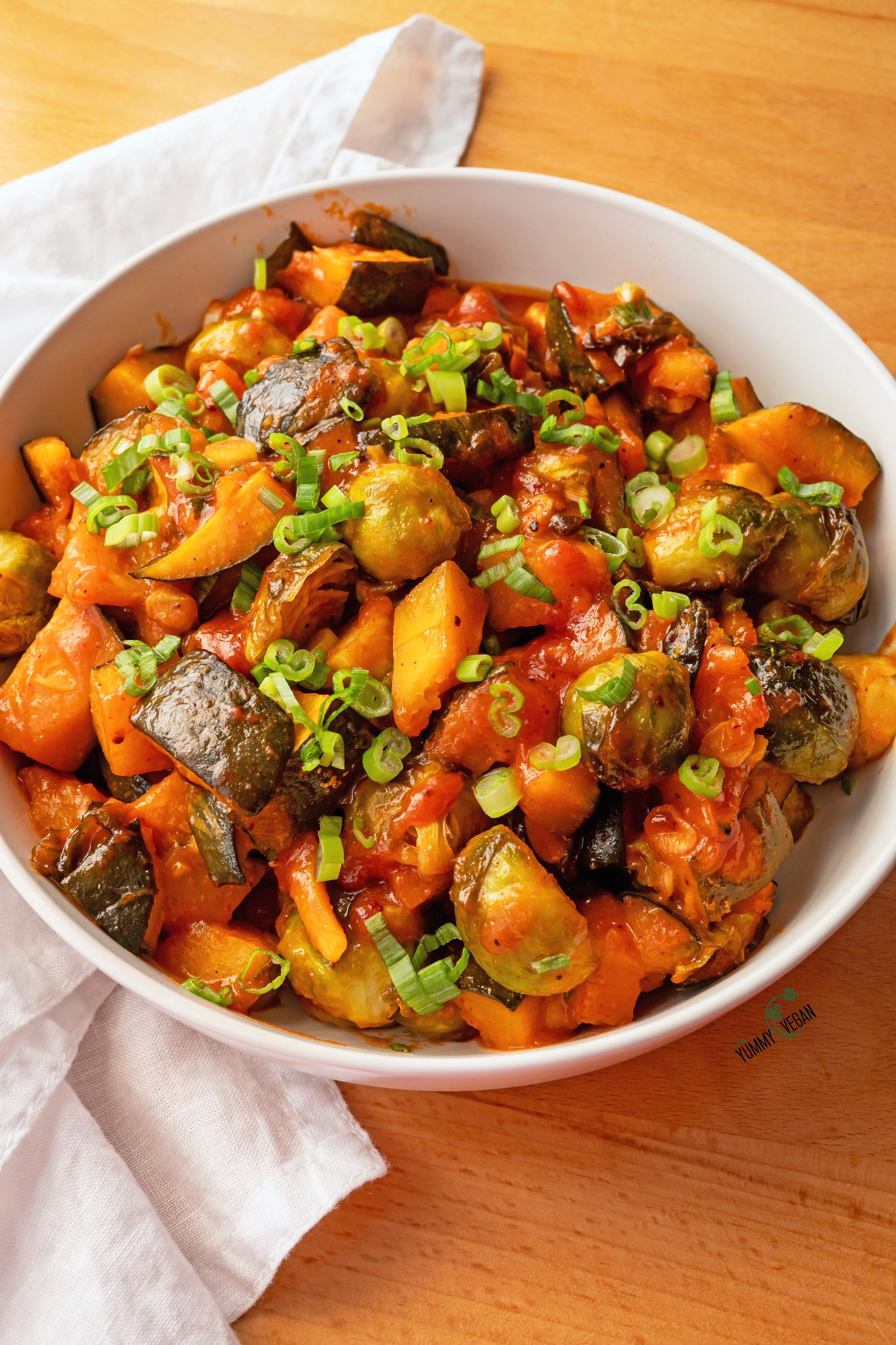Kabocha Miso Risotto

Kabocha Miso Risotto
This deliciously creamy dish is centered around the deep umami flavors of miso and the subtly sweet, nutty roasted kabocha squash, also known as Japanese pumpkin.
Risotto is not difficult to cook but does require a few key steps in the cooking process. The first is toasting the rice in hot fat such as butter, oil or both. This helps the rice absorb the liquid slowly and prevents it from getting mushy.
The second, making sure the cooking liquid is warm and added to the rice gradually. Stirring the rice to incorporate the liquid helps release its starch and create the creaminess. Lastly, finishing with vegan butter and parmesan cheese gives it added flavor and a glossy texture.
The final result is a risotto that’s deeply flavorful yet balanced and each bite is creamy, delicious and satisfying.
Serves 2-4 ( 2 as a main and 4 as a side or appetizer)
Ingredients
1 small (500-600g) Kabocha Squash or Japanese Pumpkin
1 cup (220g) Arborio Rice
2 Shallots (100g), finely diced
1 clove Garlic, minced
1 Tbsp (15ml) Olive Oil
2 Tbsp (30g) Vegan Butter, divided
6 cups (1420ml) Water
1/3 cup plus 1 Tbsp (105g) Miso Paste
1/2 cup (118ml) Sake
1/2 cup (60g) finely grated Vegan Parmesan
Salt & Pepper to taste
For the Kabocha
1 Tbsp (15ml) high heat Oil, divided
1 tsp (5g) Garlic Powder, divided
Salt & Pepper to taste
Notes
1.Kabocha - The recipe will use 1/3 cup (100g) of the roasted flesh and 1/2 cup (60g) of slices w/ skin.
2 Sake -To sub the Sake with a non alcoholic option, mix 1 part Rice Vinegar with 2 parts Water. Make sure to keep the same 1/2 cup measurement of liquid.
Directions
1.Kabocha squash has an edible skin so prepare it by first washing the outer skin well. Cut the squash in half and using a spoon remove the seeds and any stringy flesh. If you like, the seeds can be saved after washing to roast with a bit of salt & oil.
2.Cut one half of the squash into half moon shaped slices and place in a bowl. Toss the slices with a tsp of neutral oil and season with 1/2 tsp garlic powder, salt & pepper to taste. Place the slices on a baking sheet in a single layer. Cut the remaining half of squash into 2-3 pieces, rub the flesh with the rest of the oil, garlic powder and season with salt & pepper to taste. Place them onto their own baking sheet.
3.Bake everything at 425 for 10 minutes. Flip the slices and continue baking for 5-6 minutes or until tender. Allow the larger cut pieces to continue baking until tender about another 10-15 minutes. Allow everything to cool. Cut the roasted slices into about 3-4 smaller pieces before adding to the risotto.
4.In a small pot add the miso paste to the water and mix well. Heat the broth until warm. Allow it to simmer on low covered.
5.Start the risotto by heating the oil and 1 Tbsp of butter in a wide heavy bottom pot or a pan with higher sides. Sauté the finely diced shallot until translucent, about 5 minutes. Add in the dry arborio rice and mix well making sure everything is coated with the fats. Stir occasionally until lightly toasted. Add in the garlic and cook for 1 -2 minutes or until fragrant.
6.Pour in the sake and mix well. Once the rice has absorbed the sake begin adding the warm miso broth 1/2 cup at a time. Stir the rice to help incorporate the liquid. After 1-2 minutes, or before the liquid is completely absorbed, repeat the process with 1/2 cup of the broth at a time.
7.When the grains of rice have swelled measure out 1/3 cup of the roasted kabocha flesh and mix it into the rice. Continue cooking the same way adding broth and stirring until the rice is soft but slightly al dente or has a bite to the texture.
8. Add in the vegan parmesan and the remaining 1 Tbsp of butter and mix well. The consistency of the risotto should be creamy and fluid. Lastly, add in 1/2 cup of the kabocha pieces. Reserve some to garnish and serve immediately.
*Note you can add more broth if needed to maintain the fluid texture. Overall the finished texture should be a little thinner than you think as it will continue to thicken after cooking.







